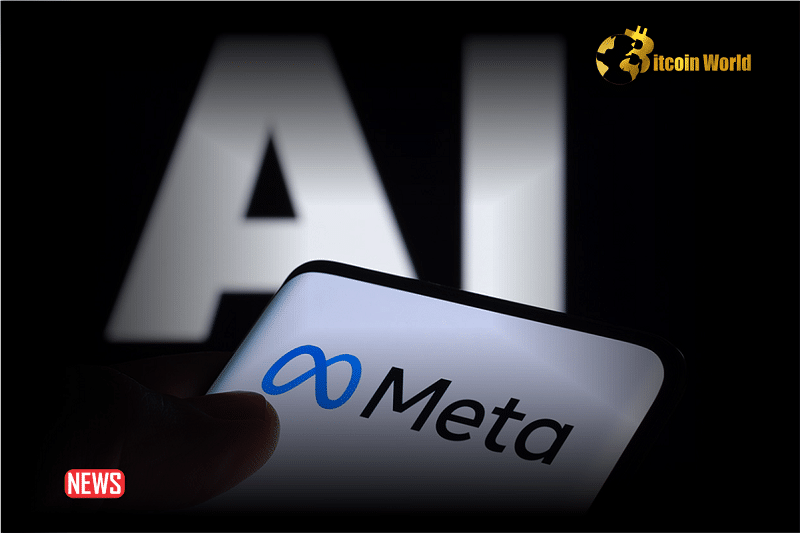Ever wondered if that stunning image you saw online was created by a human or an AI? Well, Meta is taking a significant step towards answering that question! The social media giant, known for platforms like Facebook and Instagram, has announced a new feature for its Meta AI assistant that’s all about transparency in the world of AI-generated images. Let’s dive into what this means and why it matters.
What’s the Buzz About Invisible Watermarks?
Meta is set to introduce invisible watermarks to images generated by its Meta AI. Think of it as a digital signature, subtly embedded within the image, confirming its AI origin. This move is aimed at boosting transparency and making it easier to identify content created by artificial intelligence. Here’s the core of the announcement:
- Invisible Watermarks for Meta AI Images: Meta will be adding these watermarks to images created using their text-to-image AI technology.
- Boosting Transparency: The main goal is to make AI-generated images easily identifiable, promoting clarity about content origins.
- Resilient Watermarks: Meta emphasizes that these watermarks are designed to withstand common image manipulations, like cropping or screenshots.
In their official announcement, Meta stated, “We aim to bring invisible watermarking to many of our products with AI-generated images in the future.” This signals a broader commitment to responsible AI practices across their platforms.
We’re building for the metaverse and today we’re sharing updates on our progress in AI, avatars, and more. https://t.co/6P97mOc9wV pic.twitter.com/jF3vrQExzl
— Meta (@Meta) December 6, 2023
Why Invisible Watermarks? Addressing the AI Image Challenge
With the rise of sophisticated AI image generators, it’s becoming increasingly difficult to distinguish between real photos and AI-created visuals. This blurring line raises concerns about misinformation and the potential misuse of AI technology. Invisible watermarks offer a potential solution by:
- Combating Misinformation: By clearly marking AI-generated images, it becomes easier to identify potentially misleading content.
- Promoting Responsible AI Use: Watermarks encourage transparency from creators using AI image tools.
- Building User Trust: Knowing the origin of an image can help users better assess its context and credibility.
How Do Invisible Watermarks Actually Work?
These aren’t your typical visible watermarks that overlay logos or text. Invisible watermarks are far more sophisticated. They are:
- Undetectable to the Human Eye: You won’t see them just by looking at the image.
- Machine-Readable: Special AI models are needed to detect and verify these watermarks.
- Resilient to Manipulation: As Meta mentioned, they are designed to survive common image edits, making them harder to remove or circumvent.
See Also: Meta Launches Emu Video and Emu Edit AI Models For Video and Images
Meta’s Broader AI Push
This watermark feature is part of Meta’s wider integration of AI across its products. Just recently, they rolled out AI-powered tools like:
- AI Chatbots for Image Generation: Allowing users to create photorealistic images from text prompts.
- Smart Glasses with AI Capabilities: Glasses that can answer questions and provide information using AI.
The introduction of invisible watermarks to AI-generated images is a significant step in responsible AI development. By making it harder to misuse AI for deceptive purposes, Meta is contributing to a more transparent and trustworthy digital environment.
Looking Ahead: What Does This Mean for the Future?
Meta’s move could set a new standard for AI-generated content across the internet. Here are some potential implications:
- Industry-Wide Adoption: Other tech companies may follow suit and implement similar watermarking technologies.
- Evolving Detection Methods: As watermarking technology advances, so will the methods to detect and verify these invisible signatures.
- Continued Debate on AI Ethics: This is just one piece of the puzzle in the ongoing conversation about ethical AI development and deployment.
In Conclusion: A Step Towards AI Transparency
Meta’s decision to add invisible watermarks to AI-generated images is a welcome move towards greater transparency in the rapidly evolving world of artificial intelligence. While it’s not a complete solution to all the challenges posed by AI, it’s a crucial step in fostering trust and responsible use of this powerful technology. As AI becomes further integrated into our digital lives, initiatives like this will be essential in navigating the complexities and ensuring a more informed and authentic online experience.
Disclaimer: The information provided is not trading advice, Bitcoinworld.co.in holds no liability for any investments made based on the information provided on this page. We strongly recommend independent research and/or consultation with a qualified professional before making any investment decisions.


